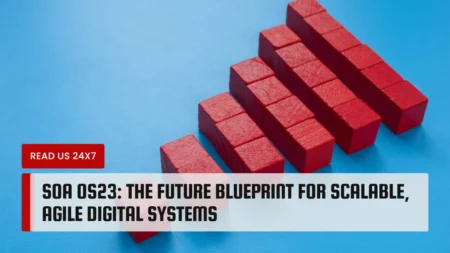Root Cause Analysis (RCA) is a popular technique that helps people determine the root cause of a problem. Root Cause Analysis aims to determine the root cause of a problem by using a set of steps and associated tools so that you can:
- Find out what happened.
- Find out why it happened.
- Find out how to reduce the chance of it happening again.
RCA believes that events and systems are interconnected. A single action can trigger another action in the same area, and so forth. You can trace back these actions to find the root cause of the problem and the path it took to become the current symptom.
Usually, there are three main types of causes.
Physical causes – Tangible or material items that fail somehow (for instance, the brakes on a car stop working).
Human causes – When people do wrong or fail to do what is necessary. Human factors usually cause physical causes (e.g., the brakes failed because no one filled up the brake fluid).
Organizational causes – A system or process used by people to make decisions and do their work is flawed. For example, vehicle maintenance was not the responsibility of one person, so everyone assumed that someone else filled the brake fluid.
RCA examines all three types. This involves identifying the root causes of the problems, analyzing the patterns, and pointing out the flaws within the system. Sometimes, RCA can reveal more than one cause.
What is RCA?
Root cause analysis is a term that covers a variety of methods that can be used to analyze failures, fix them, or troubleshoot them. Root cause analysis does not refer to one method. It is a collection of tools that look at errors in manufacturing, security manufacturing, internal processes, and assets.
Root cause analysis can be performed in many different areas, contexts, and problems, including project management, software development or manufacturing, and healthcare. Let’s look at an RCA example:
We might decide to stay at home and use a bucket to stop throwing up at work. We might consider taking the bus to get around town without a vehicle. These solutions are only for the symptoms. They do not address the root causes. We must perform a root cause analysis to determine the exact cause and fix it.
Root Cause Analysis Approaches
There are many methods, approaches, and techniques available for root cause analysis.
Events and Causal Factor Analysis
This process is widely used to analyze major single-event problems such as an explosion at a refinery. It uses fast and methodical evidence to establish a time frame for all the events leading to the accident. Once the timeline is established, it’s possible to identify the contributing and causal factors.
Change Analysis
This method can be used to analyze situations in which a system’s performance has changed significantly. This analysis examines the changes in people, equipment, information, and other factors that could have led to the performance change.
Barrier Analysis
This technique examines the controls to detect or prevent a problem and what might have gone wrong.
Management Oversight and Risk Tree Analysis
One aspect of this approach involves the use of a tree chart to examine what happened and why.
Kepner-Tregoe Problem Solving & Decision Making
This model has four phases that can be used to solve problems.
- Situation analysis
- Analyze the problem
- Analysis of the solution
- Analysis of potential problems
Root Cause Analysis Process
Step 1
Define the Problem: This involves identifying the exact problem and determining the symptoms.
Step 2
Collect Data – This includes finding evidence that the problem exists. It also includes determining the extent of the problem’s impact and how long it has been around.
Before you can look at the contributing factors, it is essential to analyze the situation comprehensively. Your RCA will be more effective if you bring together all the people involved – front-line staff and experts familiar with the situation. The most familiar people can help you gain a better understanding of your problem.
Step 3
Identifying Possible Causal Factors: This involves identifying the sequence of events that caused the problem and the conditions that enabled it to happen. Try to identify as many possible causal factors as you can during this stage.
Often, people only identify one or two causes and then move on. However, that is not enough. Root Cause Analysis is a way to get to the root of the problem and not just stop at the surface.
These tools can be used to identify causal factors.
Appreciation – Use facts to understand the consequences and then ask, “So What?”
5 Whys – Ask the “Why” until you find the root cause of the problem.
Drill Down: To better understand the bigger picture, break down a problem into smaller, more detailed pieces.
Cause and Effect Diagrams: To see the origin of the trouble, create a chart listing all possible causal factors.
Step 4
Identify the Root Cause (s) – This includes determining the cause of the problem and how it was caused.
To identify causal factors, you can use the same tools that were used in Step 3. This will allow you to examine the root causes of each factor. These tools encourage you to look deeper at every level of cause or effect.
Step 5
Recommendations and solutions – This includes identifying a solution that will prevent the problem from happening again and the implementation of the solution. The responsibility for the implementation should be shared with the person responsible, as well as the risks associated with the solution.








